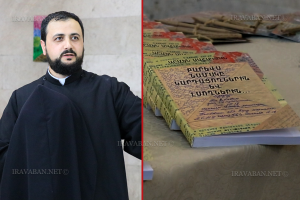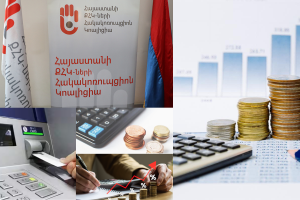OIEGI – Office for Installment of Electronic Governance Infrastructure – is the only authorized entity in Armenia which provides electronic signatures to physical entities, as well as deals with electronic ID cards and e-healthcare projects.
All the mentioned “innovations” are bringing about significant interest among progressive social layers, as they are new approaches in our reality, however, I’d like to discuss here the issue of electronic signatures.
The legal basis for the creation of electronic signatures has been the RA law on “Electronic documents and electronic digital signatures” of 14 December, 2004. By the way, I wonder who initiated the adoption of this law, since even today it is viewed as the launch of a rocket through the eyes of a dessert Bedouin.
However, let’s return to the give law which defines the concept of the electronic signature.
Electronic digital signature is a unique sequence of conventional signs arranged and presented through electronic data and cryptographic invariant of the given electronic document, which is attached of logically connected with electronic document and is used to identify given individual, as well as protect electronic document from fraud and errors.
I believe you were also surprised to read the mentioned “creator’s” 2004 “masterpiece”. It is neither modern, nor legally sound.
In OIEGI website, on the most visible place you can find another definition of electronic signature: “Electronic signature is a unique sequence of conventional signs presented in electronic digital form”….
The three dots at the end of the previous sentence has long been the symbol of inability of our “best minds” to identify electronic signature.
Once thing is clear, if you have an electronic digital signature, you need to have a field for its implementation. Let’s see what is there to sign. It turns out that using the electronic digital signature, which was named e-signature by OIEGI, you can sign any electronic document. Sounds exciting, doesn’t it? And the article 4, paragraph 2 of the mentioned law just blows you away, if you realize the potential of the e-signature. It prescribes: “E-signature has the same legal power on a electronic document as real signature on a hard copy document, if the authenticity of the e-signature is proven and there are no evidence of fraud of manipulation, except the changes that are inevitable during reference of the document and (or) maintenance.”
Here we get images of fantastic scenes: computer, internet and e-signature helps us avoid numerous unpleasant phenomena like those lines that are unbearable and have people upfront due to pulling strings in public offices, where public servants give their attitude of tired and unhappy employees to the applicants. Though one push of a button we conclude deals, receive needed documents and references, send applications to state authorities, send cases to courts and all that free of any fuss and irritation, feeling like a human that overcame the jungle law of brutal force.
However, article 4, paragraph 3 of the same law says: “State, local government authorities, physical and legal entities are not obliged to accept e-signature documents, if appropriate technical means are not available to process it”.
Here is the ginger of that law adopted in 2004 and now coming into spotlight.
In the Republic of Armenia, such technical means are currently enjoyed by the State Registrar for Legal Entities, Tax Service, several ministries and agencies. Considering that the law has been in effect for “only” 7 odd years, one should believe that the “not mandatory” phrase will “soon” be replaced by “correct form” – MANDATORY.
– Hey Bedouin, stop chasing the stars- your camels are starving!















